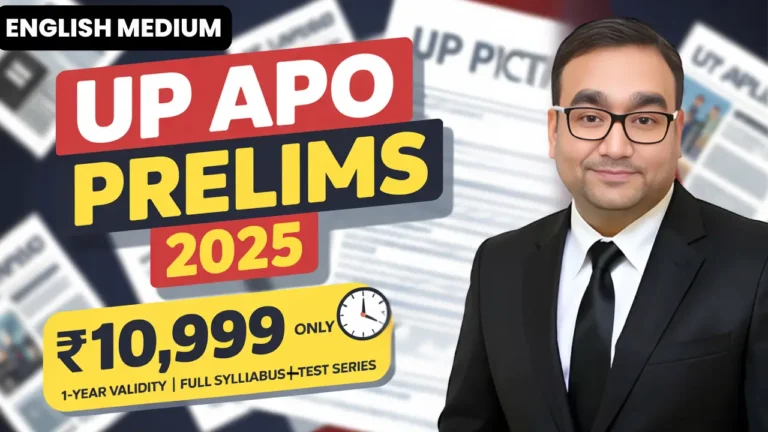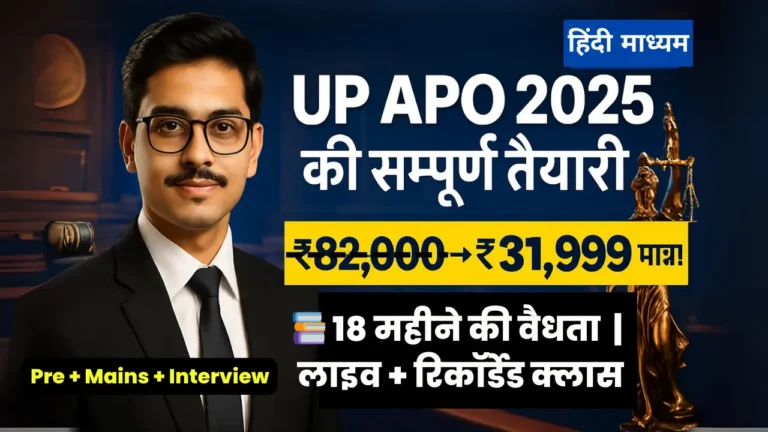The Supreme Court of India has released a groundbreaking report, Unclogging the Docket: Tackling Short, Infructuous and Old Cases, detailing a pendency project conducted by the Centre for Research and Planning (CRP) from November 2024 to May 2025. This initiative, the first to implement Differentiated Case Management in India, processed 10,000 pending cases, identified short, old, and infructuous matters, and achieved judicial resolution for around 2,000 cases. With an improved disposal rate of 104%, this project offers a scalable model for reducing judicial pendency across India.
Table of Contents
ntroduction: A Milestone in Judicial Reform
The Supreme Court of India released a significant report titled Unclogging the Docket: Tackling Short, Infructuous and Old Cases, prepared by the Centre for Research and Planning (CRP). This report transparently documents a pendency project conducted between November 2024 and May 2025, aimed at addressing the persistent challenge of judicial backlog in the Supreme Court. For the first time in India, the court implemented Differentiated Case Management (DCM), a strategic approach to identify and expedite the disposal of short, infructuous, and old cases. This initiative not only improved the court’s disposal rate to 104% but also set a precedent for tackling pendency across judicial forums in India.
This blog explores the key aspects of the Unclogging the Docket report, its methodology, outcomes, and implications for the Indian judiciary, offering valuable insights for law students, legal professionals, and those interested in judicial reforms.
Read More: Mastering State-Specific Law Questions in Judiciary Interview 2025
Background: The Pendency Challenge in the Supreme Court
Judicial pendency has long been a critical issue in India, often described as the bane of the judiciary. As of mid-April 2025, the Supreme Court had a pendency of 81,015 cases, contributing to a broader national backlog of over 4.5 crore cases across district courts and High Courts. Despite representing only 0.14% of total pendency, the Supreme Court’s docket is one of the heaviest globally due to its expansive jurisdiction, which includes original, appellate, and advisory roles, as well as handling Public Interest Litigations (PILs), election petitions, and more.
The Unclogging the Docket project was initiated under the vision of the then-Chief Justice of India, Sanjiv Khanna, in November 2024. It aimed to address the backlog by focusing on cases that could be resolved quickly—namely, short, infructuous (cases that have become irrelevant due to external factors like settlement or death of a party), and old matters that had remained unlisted for years. The project was led by Kriti Sharma, an academician trained in empirical studies, along with her team, including judicial officer Padma Ladol, consultants Shubham Kumar and Vrishti Shami, and 25 dedicated law clerks.
Read More: Top 10 Judiciary Exam Myths Every Aspirant Should Ignore: A Guide to Success
Methodology: Implementing Differentiated Case Management
The Unclogging the Docket report marks the first application of Differentiated Case Management (DCM) in India, a strategy that classifies cases based on their complexity, urgency, and procedural requirements to optimize judicial time. Here’s how the CRP team executed this initiative:
- Case Identification and Classification: The team processed 10,000 pending cases at the Supreme Court, identifying those that were short, infructuous, or old. These included matters that had fallen through the cracks, such as unlisted cases, and those that could be resolved in one or two hearings.
- Case Listing and Briefs: The identified cases were prioritized for listing. On Tuesdays and Wednesdays (designated for Miscellaneous After Notice matters), the first ten matters were CRP-identified cases. On regular hearing days (Thursdays), the majority of listed matters were from this project. Each case was accompanied by a detailed brief prepared by law clerks, providing judges with case histories, legal milestones, and classification reasoning.
- Coordination Across Departments: This was an in-house institutional endeavor, with seamless coordination between the CRP team, the Listing, Paper Book, and Technology departments of the Supreme Court. This ensured efficient scheduling and availability of case files for hearings.
- Judicial Resolution: The listed cases were argued by lawyers, heard on merit, and provided fair judicial resolutions across all courtrooms, supported by the innovative mechanisms adopted by Supreme Court judges.
Key Outcomes: A Significant Step Toward Reducing Pendency
The Unclogging the Docket project yielded impressive results, demonstrating the efficacy of DCM in addressing judicial pendency:
- Disposal of Cases: Out of the 10,000 cases processed, around 2,000 cases (1,525 main matters with 490 connected cases) received judicial resolution within six months. This included:
- Miscellaneous No Coram Cases: 770 cases (with 173 connected) were resolved, with 71.6% disposed of in one or two hearings.
- Miscellaneous Coram Cases: 255 cases (with 254 connected) were cleared in one or two hearings.
- Regular Matters: 376 criminal cases (with 63 connected) and 124 civil cases (with 3 connected) were disposed of within 17 regular hearings from January 2025, boosting the criminal disposal rate to over 109%.
- Improved Disposal Rate: The Supreme Court’s overall disposal rate for the first half of 2025 reached 104%, reflecting a significant improvement in institutional efficiency.
- Additional Measures: The project facilitated the disposal of group matters where the main issue had already been adjudicated, assessed pending group matters, and assisted in streamlining 900 Motor Accident Claims Tribunal (MACT) cases for disposal. It also supported cases involving tax amounts less than ₹5 crores, leading to the disposal of over 600 additional cases.
The report lists important judgments emanating from this project, including cases like State of Rajasthan v. Chatra (2025 INSC 360), where the Supreme Court reinstated a conviction for the rape of a minor, and Suresh v. State Rep. by Inspector of Police (2025 INSC 318), where the court acquitted the appellant due to discrepancies in a dying declaration. These rulings highlight the project’s impact on delivering justice in long-pending matters.
Broader Implications: A Scalable Model for Judicial Reform
The Unclogging the Docket project offers several insights and implications for the Indian judiciary:
- Sustainable Case Management: The report suggests a more planned listing of cases daily, ensuring that matters identified for quick disposal are regularly scheduled. This approach can sustainably reduce pendency across courts.
- Scalability Across Judicial Forums: The DCM framework, as detailed in the report, can be adapted and emulated by High Courts and district courts facing severe docket congestion. Its success at the Supreme Court demonstrates its potential for broader application.
- Institutional Collaboration: The project’s success underscores the importance of in-house coordination between judicial and administrative departments, setting a model for collaborative reform.
- Judicial Efficiency as Access to Justice: By prioritizing short, infructuous, and old cases, the project ensures that judicial time is allocated efficiently, allowing courts to focus on complex matters while clearing backlogs, thereby enhancing access to justice.
Critical Analysis: Challenges and Opportunities
While the Unclogging the Docket project is a significant step forward, it also highlights challenges and opportunities for future reforms:
- Challenges:
- Scale of Pendency: Despite the disposal of 2,000 cases, the Supreme Court’s pendency remains high at over 81,000 cases, indicating the need for sustained efforts.
- Resource Constraints: The project relied heavily on law clerks and a small team, which may not be sustainable for larger-scale initiatives without additional resources.
- Systemic Issues: Broader systemic issues, such as procedural delays and adjournments, continue to contribute to pendency and require complementary reforms.
- Opportunities:
- Technological Integration: The report notes the exploration of AI and technology in case management, which could further streamline processes like e-filing and defect curing.
- Judicial Training: The experience gained by law clerks in this project can inform training programs for judicial officers on efficient docket management.
- Policy Advocacy: The project’s success can inspire policy changes, such as mandatory DCM frameworks across courts, to institutionalize pendency reduction strategies.
Ways Forward: Building on the Unclogging the Docket Initiative
To sustain and expand the impact of the Unclogging the Docket project, the following steps could be considered:
- Adopt DCM Nationwide: High Courts and district courts should implement DCM, tailoring the Supreme Court’s model to their specific needs and capacities.
- Enhance Technological Support: Invest in AI-driven tools for case classification, listing automation, and pendency forecasting to support judicial efficiency.
- Increase Judicial Resources: Address the judge-to-population ratio and infrastructure deficits to complement case management reforms.
- Stakeholder Collaboration: Encourage collaboration between the judiciary, Bar, and executive agencies to address procedural delays and reduce unnecessary litigation.
Conclusion: A Blueprint for Judicial Efficiency through Unclogging the Docket
At 09:50 PM IST on May 23, 2025, the release of the Unclogging the Docket report marks a turning point in India’s judicial reform efforts. By implementing Differentiated Case Management for the first time, the Supreme Court has not only reduced its pendency but also provided a scalable blueprint for other courts to follow. The disposal of 2,000 cases, an improved disposal rate of 104%, and the resolution of long-pending matters reflect the project’s success in enhancing access to justice. For legal professionals, law students, and advocates of judicial reform, this report offers a compelling case study on how data-driven, collaborative strategies can transform the judiciary. The legacy of this project, driven by the vision of Chief Justice Sanjiv Khanna and the dedication of the CRP team, lies in its potential to inspire a more efficient and accessible justice system across India.
Call-to-Action
What are your thoughts on the Supreme Court’s Unclogging the Docket initiative? Follow Doon Law Mentor for more updates on judicial reforms! #UncloggingTheDocket
#doonlawmentor #SupremeCourt2025 #JudicialReforms #CasePendency #CRPReport #JusticeDelayed #LegalUpdates #CourtManagement #IndianJudiciary #UncloggingTheDocket #LawStudentIndia #JudiciaryPreparation #SupremeCourtNews #younglawyers #judicialrevoulution
FAQs
- What is the Unclogging the Docket report?
It is a report by the Supreme Court’s Centre for Research and Planning, detailing a pendency project conducted from November 2024 to May 2025 to tackle short, infructuous, and old cases. - What is Differentiated Case Management (DCM)?
DCM is a strategy that classifies cases based on complexity and urgency to optimize judicial time, used for the first time in India during this project. - How many cases were resolved under this project?
Around 2,000 cases (1,525 main matters with 490 connected cases) were resolved, including miscellaneous and regular matters. - What was the impact on the Supreme Court’s disposal rate?
The project improved the court’s disposal rate to 104% for the first half of 2025, with the criminal disposal rate exceeding 109%. - Who led the Unclogging the Docket project?
The project was led by Kriti Sharma, with a team including Padma Ladol, Shubham Kumar, Vrishti Shami, and 25 law clerks, under the vision of Chief Justice Sanjiv Khanna. - What types of cases were targeted in this project?
The project focused on short, infructuous (irrelevant), and old cases, including unlisted matters and MACT cases, that could be resolved quickly. - How did the project improve judicial efficiency?
By prioritizing quick-disposal cases, providing judge-ready briefs, and ensuring planned listing, the project optimized judicial time and cleared backlogs. - Can this model be applied to other courts in India?
Yes, the report suggests that the DCM framework can be adapted and emulated by High Courts and district courts to address pendency. - What additional measures were taken during the project?
The project facilitated the disposal of group matters, assessed pending group cases, and assisted in resolving 900 MACT cases and tax cases under ₹5 crores. - Why is the Unclogging the Docket report significant?
It provides a scalable model for reducing judicial pendency, enhances access to justice, and sets a precedent for data-driven judicial reforms in India.






